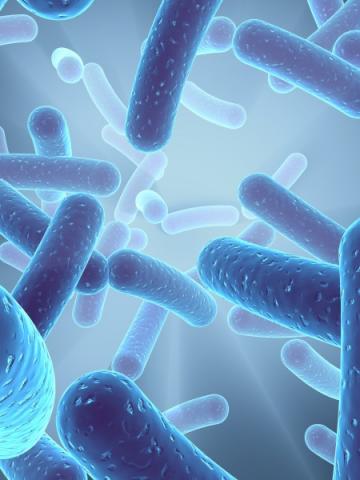Public health threat from antibiotic resistant bacteria

Antimicrobial resistance in bacteria is an emerging problem and a serious threat to public health. Today a new research paper was published which identifies a new resistance mechanism in bacteria, which makes them resistant to an important group of antibiotics known as carbapenems.
What are carbapenems?
Carbapenems are B-lactam (penicillin) -related antibiotics which have a broad spectrum of action against many bacteria, including those which are often resistant to other antibiotics. They are used to treat the causes of serious hospital and community –associated infections. Most carbapenems are given by intravenous administration.
What is NDM-1?
NDM-1 is a new enzyme identified that breaks down carbapenem antibiotics rendering them ineffective. Bacteria carrying the gene for NDM-1 often carry other genes for resistance to other classes of antibiotics.
Which bacteria carry this enzyme?
NDM has been identified from bacteria belonging to a group called the Enterobacteriaceae, e.g. E.coli. They are a different group from MRSA. In this study NDM-1 was mostly found among Escherichia coli and Klebsiella pneumonia isolates.
Are there other antibiotics available to treat these bacteria?
Sometimes these bacteria remain sensitive to other antibiotics, e.g. colistin, tigecycline. Sensitivity to other antibiotics can be tested in the laboratory. The development of new antibiotics may ultimately be required
What is the scale of the problem?
NDM-1 producing Enterobacteriaceae are prevalent in India and Pakistan. They have also been recently isolated from patients in the USA, Netherlands, Australia and Canada.
During 2008-09 37 Enterobacteriaceae isolates with the NDM-1 enzyme were identified in 25 UK laboratories, one of which came from Northern Ireland. Several of the UK patients had undergone elective, including cosmetic, surgery while visiting India or Pakistan. The world wide spread of NDM-1 producing bacteria will have serious implications for the treatment of infections such as E.coli, a common cause of urinary tract infections.
How do you acquire NDM-1 resistant bacteria?
Acquisition is often associated with foreign travel or hospitalisation in foreign countries, specifically India and Pakistan.
How do you prevent spread of NDM-1?
Spread between patients is prevented by good standard infection control precautions. These include isolating the patient in a single room, good hand hygiene practice by staff and patients and by staff using appropriate protective equipment when performing clinical procedures.
What is the Public Health Agency (PHA) doing?
The Health Protection Service in PHA closely monitors carbapenem resistance trends and including NDM-1.
In June 2010 the PHA and DHSSPS jointly launched the regional ‘Clean Your Hands’ campaign for primary care and the community. This complements the hand hygiene campaign in our hospitals. PHA works closely with all HSC organisations on prevention and control of infections.
Prudent and appropriate antibiotic prescribing is essential to preventing development of antibiotic resistance. The PHA and HSCB have issued updated guidance in 2010 to GPs on antibiotic prescribing in primary care. Trusts also have similar guidance in place and antimicrobial stewardship is essential to preventing health care associated infections and antibiotic resistance.
